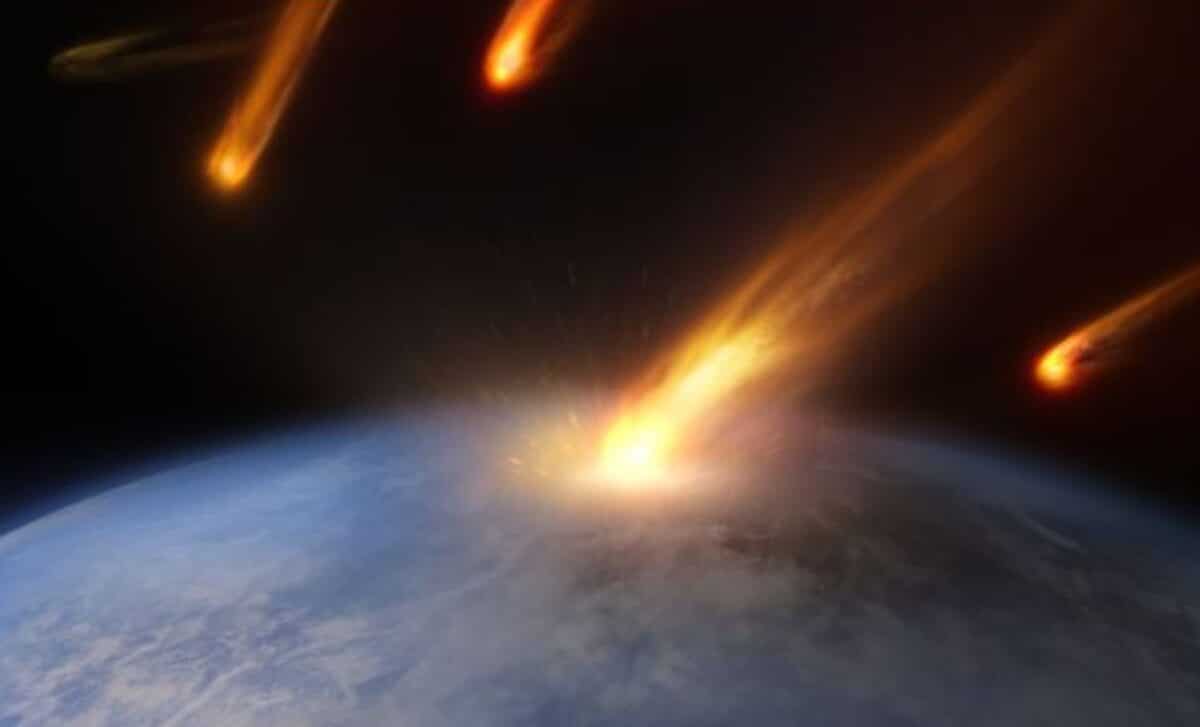On October 24, 2024, four large asteroids, including one as tall as a skyscraper, will pass by Earth within a 12-hour span. Though classified as “potentially hazardous,” none of these space rocks pose a threat to our planet. Scientists hope to capture radar images to learn more about these newly discovered asteroids as they make their closest approaches.
Asteroid Alert! Four Large, Potentially Hazardous Space Rocks to Zoom Past Earth Tomorrow

On October 24, 2024, four sizable asteroids will make their closest approaches to Earth in rapid succession, all within a 12-hour period.
These space rocks, ranging in size from 100 feet to 580 feet (30 to 177 meters) across, have been labeled as "potentially hazardous," yet none are on a collision course with our planet. While they pose no threat, their size and proximity to Earth have sparked significant interest among scientists.
A Brief but Busy Flyby
The four asteroids, identified as 2015 HM1, 2024 TP17, 2002 NV16, and 2024 TR6, will pass by Earth at distances ranging from 2.8 million miles to 3.5 million miles (4.5 to 5.6 million kilometers). The first of these, 2015 HM1, will pass at 0:36 a.m. EDT and is the smallest of the group at around 100 feet across. Following closely, 2024 TP17, which measures about 170 feet, will approach Earth at 4:20 a.m. EDT. The largest and perhaps most intriguing of the group, 2002 NV16, is 580 feet across—taller than some skyscrapers—and will come within 2.8 million miles of Earth at 11:47 a.m. EDT.
While these distances may seem large, they are relatively close in astronomical terms. For context, the average distance between Earth and the moon is roughly 238,855 miles (384,400 kilometers), meaning these asteroids are passing by at distances that are 12 to 14 times greater than that. However, asteroids like 2002 NV16, classified as a potential "city killer," could cause devastating effects if they were to ever collide with Earth.
Newly Discovered Space Rocks and the Potential Threat
What makes this event even more noteworthy is that two of these asteroids—2024 TP17 and 2024 TR6—were only discovered in October 2024, just weeks before their closest approach. This highlights a broader issue in astronomy: many asteroids are often discovered only shortly before their near-Earth flybys. The Catalina Sky Survey, which regularly monitors the skies for such objects, reports that roughly 2,000 near-Earth asteroids are found each year. These discoveries are critical to understanding the potential risks posed by space rocks.
While the four asteroids in question pose no immediate danger, the fact that they are classified as "potentially hazardous" underscores the importance of continued monitoring. According to NASA's Near-Earth Object Program, asteroids are deemed hazardous if their orbits bring them within 30 million miles of Earth. Although these asteroids are far from an imminent threat, their size and speed—reaching several kilometers per second—mean that an impact could have disastrous consequences.
Scientists often use flybys like this as opportunities to capture radar images of the space rocks. These images can help researchers determine the shape, size, and trajectory of the objects, potentially offering insights into their future orbits. Live Science reports that such observations have already provided crucial information about some previously untracked asteroids, revealing unexpected characteristics like changes in trajectory.
Future Close Approaches of Asteroids
Looking beyond this week's flybys, two of the four asteroids are expected to make even closer approaches to Earth in the coming decades. 2024 TR6 will pass by again on August 5, 2039, at a much closer distance of just 1.2 million miles (1.9 million kilometers), while 2024 TP17 will return on October 25, 2040, coming within 1.3 million miles (2.1 million kilometers). Although still far enough to avoid any threat, these future visits highlight the importance of long-term tracking of near-Earth objects.
As asteroid detection technologies improve, scientists are becoming more adept at identifying potential hazards earlier. The close flybys tomorrow serve as a reminder of the dynamic and ever-changing nature of the cosmos. While no immediate danger exists, these objects offer valuable learning opportunities for astronomers to refine techniques and potentially develop ways to mitigate future risks from similar asteroids.
The continued monitoring of near-Earth objects remains a key priority for space agencies worldwide. NASA's Asteroid Watch Dashboard keeps track of these objects and provides up-to-date information on their distances and future trajectories. As asteroids like 2002 NV16 and 2024 TR6 return in the future, scientists will have more opportunities to study them, ensuring that Earth remains well-protected from potential impacts.



